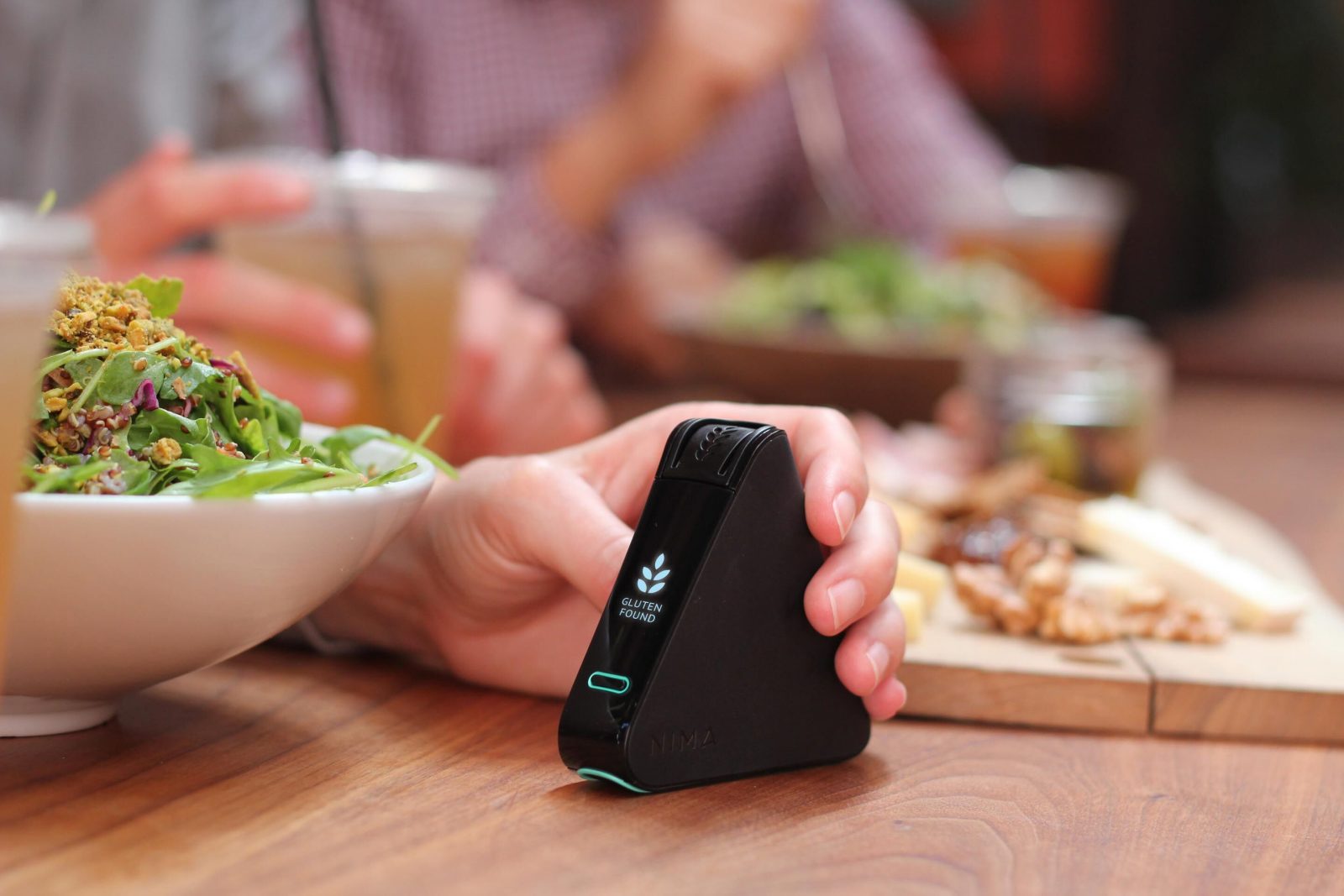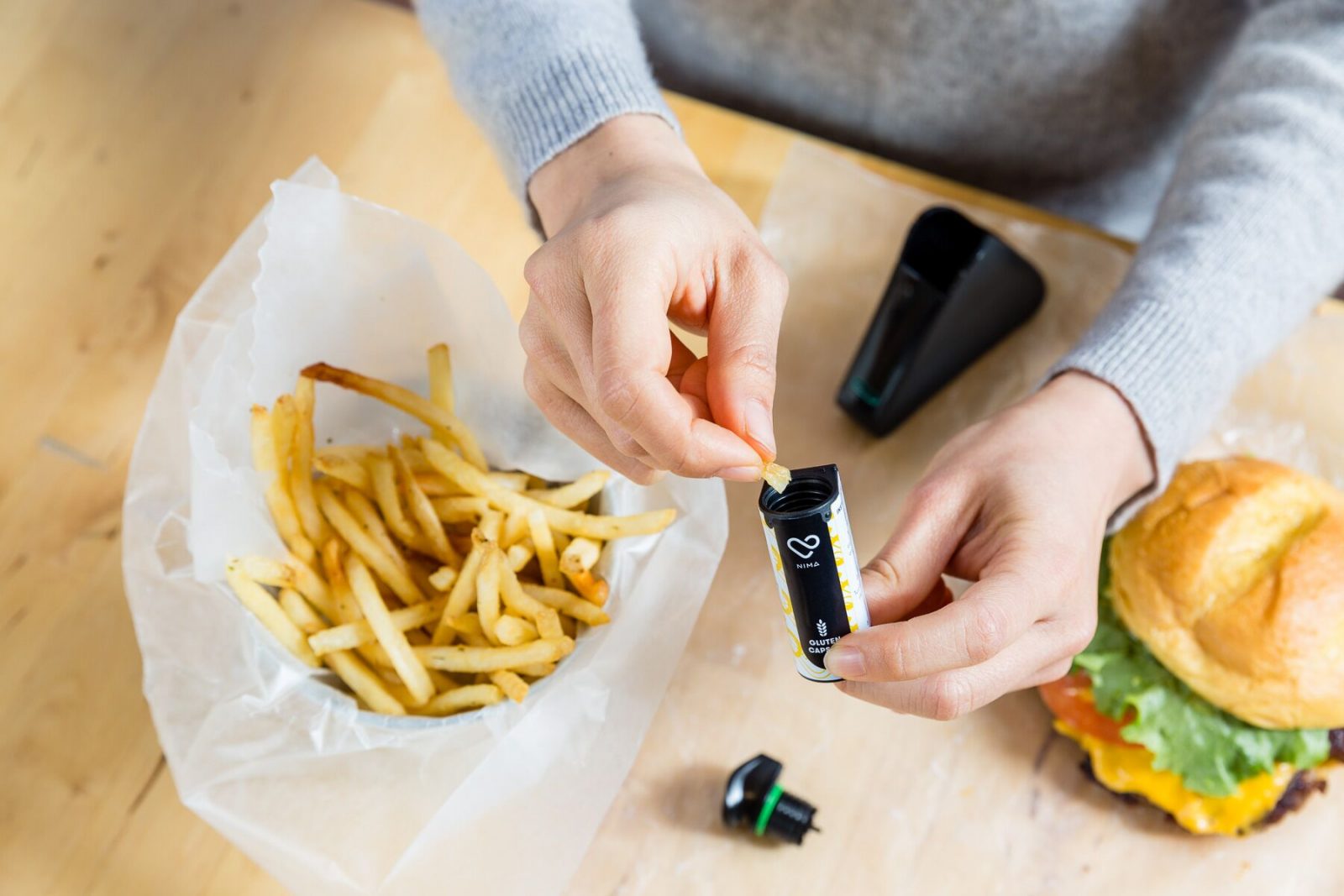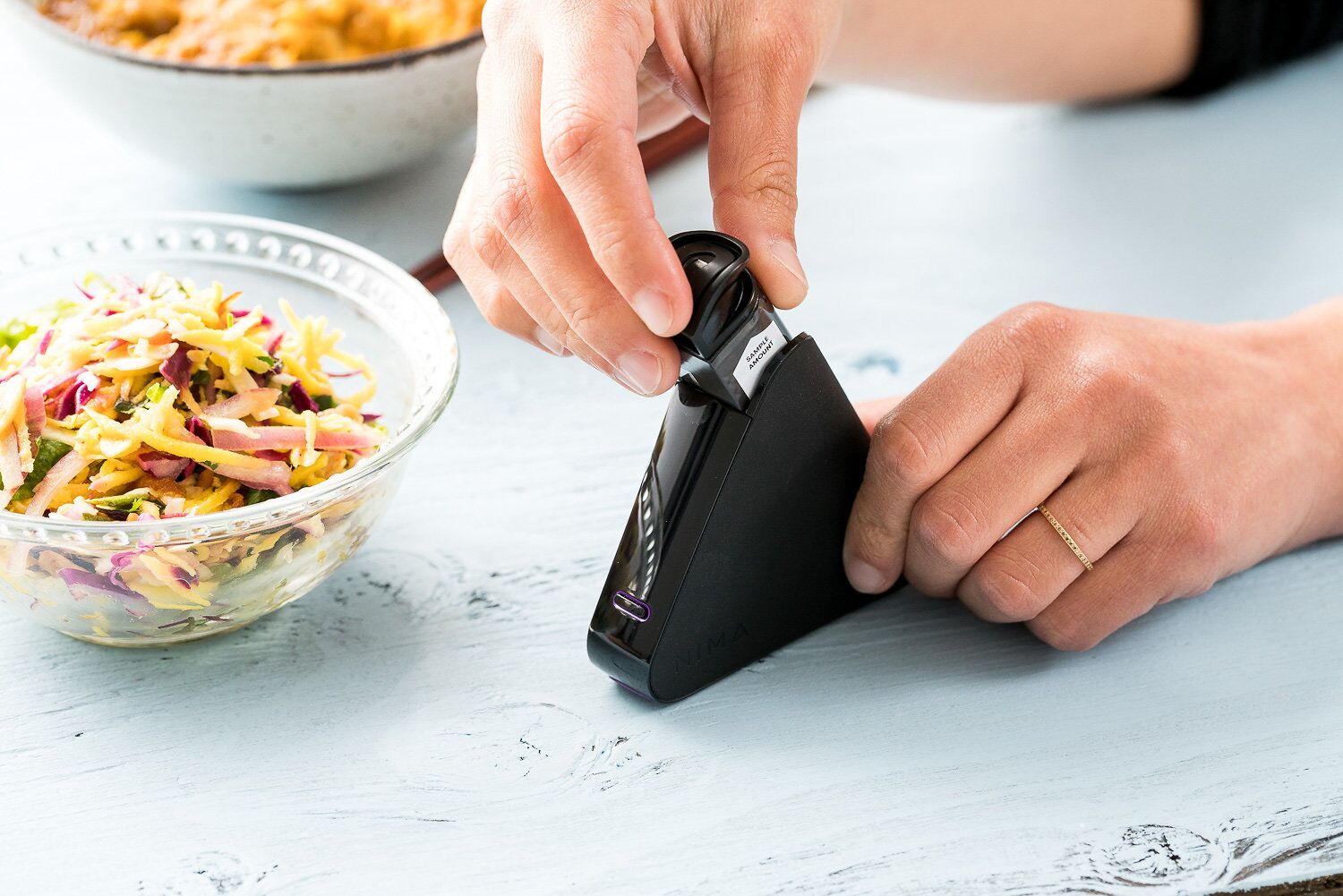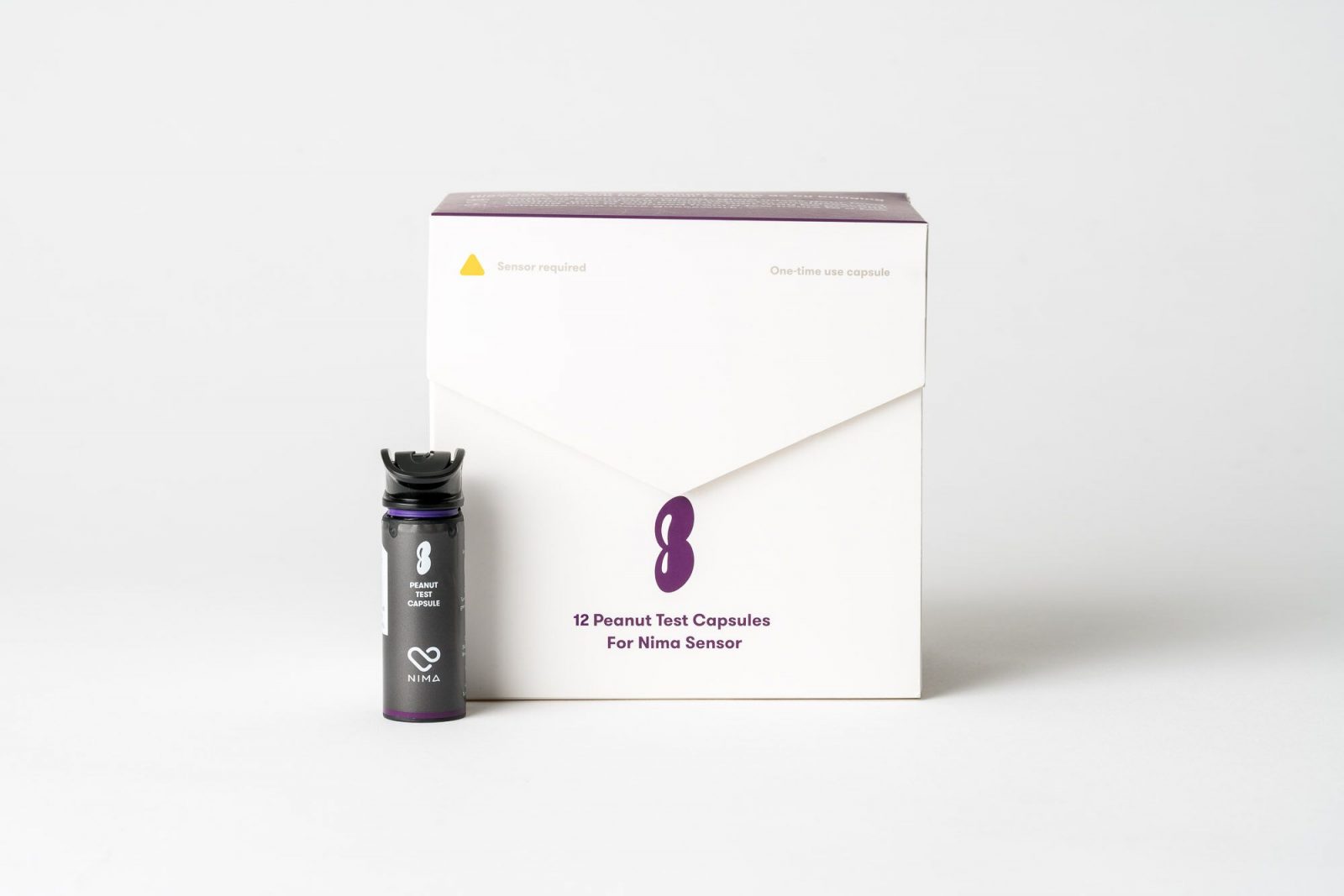Finding Nima: Meet The Device That Discovers Food Allergy Ingredients

Photo Credit: Nima
Data, sensor technology and health are intersecting in new ways, making it easier for us all to live healthier lives. Recently, a practical solution caught my eye—it’s especially relevant as we enter peak travel and vacation season. When we eat at home, it’s easy to control what we eat and how we cook. When we eat out or when students go to school or kids are on playdates, we’re left to wonder what’s actually in the food. This issue is especially problematic when allergies or strong dietary restrictions are involved and becomes even more worrisome when potential reactions are extreme or life-threatening. So, rather than stay home, now there is a tool to help you eat with confidence and feel empowered about your food choices. Do you have a gluten or peanut allergy or sensitivity? Or, simply prefer to follow a gluten-free diet for other reasons? If so, meet Nima—your new best friend!
Nima is the first and only pocket-sized device allowing consumers with special diets to test their food immediately for these proteins and allergens. Although the gluten sensor was first introduced in 2015 followed by the peanut sensor in 2018, it came across my radar recently through a friend diagnosed with celiac disease. She introduced me to this new discreet, portable mini-gadget that takes the guesswork out of whether gluten or peanuts are present in food. The company slogan is “Let Nima take the first bite.”

Photo Credit: Nima
Nima is a stylish 3.25-inch sleek black triangular device which easily fits into any purse or pocket and allows you to test food right at the table in less than two minutes to get a result. A happy face means no gluten or peanuts and an exclamation with a symbol of wheat or peanuts means these allergens are present. If it can’t read the food for some reason, an error message comes back so best to pass on whatever entrée you were considering to be safe. There are two devices—one for gluten and one for peanuts. If you happen to have allergies or sensitivities to both, you would have to carry two Nimas with you.
When eating out, folks with allergies often must rely on the knowledge of the chef or waitstaff which sometimes is lacking. If you’re traveling internationally, language and translation can present further obstacles. More importantly, a lot of cross contamination often takes place in kitchens: in ovens, on cutting boards, in pans, and can occur even at the food source such as in the factory or processing facility, etc.

Photo Credit: Nima
Shireen Yates, C.E.O. and co-founder of Nima—whose vision for the company sprang from personal experience with food intolerances—says, “Nima is finding gluten in about 30 percent of dishes labeled as gluten-free.” My friend shared she has found gluten in items tested from a restaurant’s gluten-free menu as a result of cross-contamination in the kitchen.
Awarded for outstanding innovation by organizations such as Time, TechCrunch and Travel & Leisure, Nima’s antibody-based chemistry was developed by MIT scientists and Nima received a grant from the National Institute of Health to build its peanut sensor. Nima’s sensors test a sample of liquid or solid food on-the-go, using a patent-pending blend of chemistry, electrical and mechanical design. In three easy steps even a child can do, Nima delivers its yes or no reading based on a measure of accuracy in a range of ppm (parts per million). A gluten-positive reading is based on a result greater than or equal to 20ppm for gluten and greater than or equal to 10ppm for peanuts. Below 20ppm is the FDA standard for gluten-free. 10 ppm is the lowest adverse reaction level to peanuts observed in patients in clinical studies.

Photo Credit: Nima
It’s important to note some people have reactions so sensitive they react to ppm substantially under these amounts. There is the chance Nima might detect a ppm under this reference range—but there is no guarantee. So, Nima is not for everyone. It doesn’t deliver the exact ppm reading, nor does it guarantee the food tested is 100% free of the allergen especially since the pea-sized sample one submits is not necessarily representative of the entire meal you might consume.
The company founder admits, “It’s highly accurate but not perfect—however, a gluten-positive response is a true red flag. When comparing Nima’s performance to lab tests for gluten, there was a 97.5-99% chance that if the sample tested positive for gluten, it contained 20ppm or more. When comparing Nima’s performance to lab tests for peanuts, there was a 99-100% chance that if the sample tested positive for peanut, it contained at least 10ppm of the allergen.”

Photo Credit: Nima
Dr. Stephen Taylor, a leader in food allergen diagnostics from the Food Allergen Research and Resource program who led Nima’s validation studies concluded, “use of the Nima device would protect the health of gluten-sensitive consumers, as long as it’s properly used on foods with reasonable uniform gluten distribution.”
Besides using the device, you can become part of the Nima membership community designed to be “the ultimate companion for gluten-free (or peanut-free) living.” Users can download the app in the app store on iOS and Android. More than 10,000 foods have been tested and contributed in the app. My friend shared she was recently in a restaurant and did a test (based on your phone’s location services, Nima knows what restaurant you’re in). She received a negative result and Nima asked her what she just tested. She had the opportunity to ignore the request (if engaged in conversation) or participate by providing feedback. The device connects to the Nima mobile app and shares test results allowing discoverability to diet-friendly (gluten-or-peanut-free) restaurants (including internationally) and packaged foods. This in turn, informs the community.

Photo Credit: Nima
So, the net-net is Nima is a powerful tool for providing peace of mind to the millions of adults and children who suffer from gluten and peanut allergies. It’s still important to vet with waitstaff or the chef, ask for an allergen-free menu, if it’s available, and carry any medical equipment or medication, such as an EpiPen if potential allergic reactions could be extreme. But it places a new level of screening in the palm of your hand, and that’s pretty empowering.
The company plans to expand its offerings to other allergens such as milk and tree nuts, so stay tuned. For more information on the science, the details of exactly how it works, testimonials, and pricing, check out https://nimasensor.com.












